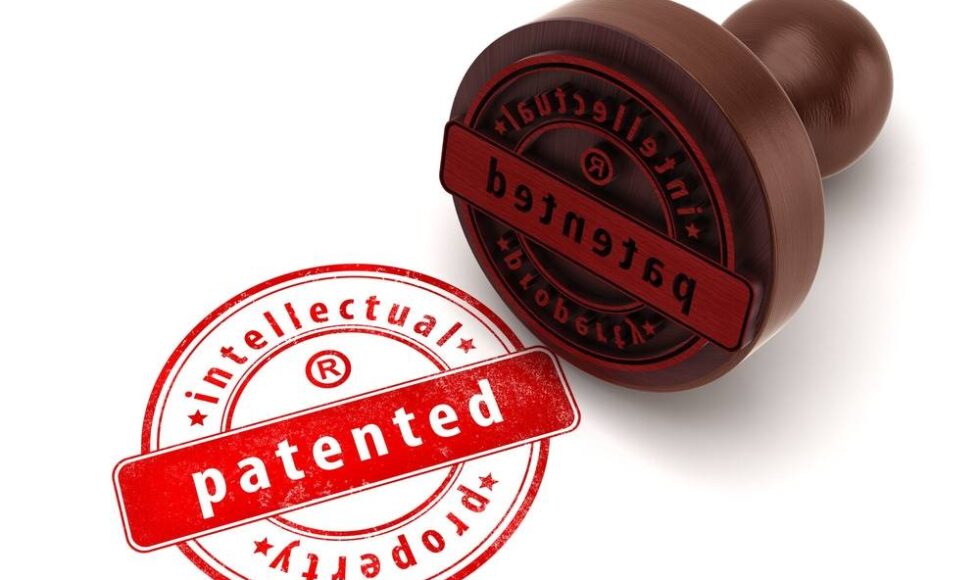Introduction
A recent judgment by the Delhi High Court in Vifor International Ltd & Anr. vs Defendants has shed light on the intricate realm of product-by-process patent claims and their implications for patentability and infringement.
Presently, as per practice guidelines followed by Indian Patent Office (‘IPO’) in prosecuting patent applications pertaining to ‘product-by-process’ claim, the claim should disclose a novel and inventive product, and patentability in such a claim cannot depend upon novelty and un-obviousness of the process limitation alone.
Facts
Vifor’s Patent IN’536 titled ‘Water Soluble Iron Carbohydrate Complex and A Process For Producing Water Soluble Iron Carbohydrate Complex’, relates to Ferric Carboxymaltose (FCM). FCM is the first non-dextran iron complex with high intravenous iron dosing and high rate of administration, and the invention is used for intravenous treatment of iron deficiency and iron deficiency anaemia, when oral iron preparations are ineffective or cannot be used. Claim 1 of IN’536 is a product claim for FCM and can also be described as ‘product-by-process’ claim. The process elements are used to describe the end product which forms the subject matter of the claim.
Vifor entered into a non-exclusive license agreement with Emcure Pharmaceuticals Ltd. In October 2012 with an aim to commercializing its patent under the brand name Encicarb (now also sold under the brand names Ferium and Orofer FCM) in India.
Over the years, Vifor and Emcure instituted several suits of infringement against Defendants MSN Laboratories Private Limited, MSN Life Sciences Pvt. Ltd. (hereinafter collectively referred to as “MSN”), Dr. Reddy’s Laboratories Limited, Corona Remedies Private Limited and Virchow Biotech Private Limited [1]-[4], all of whom are generic drug manufacturers in India.
In the present suit of infringement, Vifor asserts that the product claim of IN’536 covers the product, irrespective of the process used for its manufacture. While the process terms used in claim 1 to describe the product do represent the exemplary process to prepare FCM, it does not limit the claim to mandate the use of the said process and covers the product per se regardless of the process used for its preparation. Further, according to Vifor, the grant of several interim injunctions in favor of Vifor pertaining to FCM not only indicates the strength of IN’536 but also shows a consistent view of different Courts in favor of protecting Vifor’s rights in the suit patent. Furter, going by the plain reading of the definition of “invention” under Section 2(1)(j) of the Indian Patents Act, 1970 (as amended), the Act recognizes only “product” and “process” as capable of being patentable subject matter and no third category, i.e., ‘product-by-process’, has a statutory recognition.
Defendants contended that scope of Claim 1 of ’536 is limited to a product obtained by or through the specific process provided therein i.e. oxidation of maltodextrin using aqueous hypochlorite and it does not cover any or all processes that may be used to obtain FCM, or any or all processes for oxidation of maltodextrin. Since Claim 1 is a ‘product-by-process’ claim, use of different process by the Defendants to produce FCM cannot amount to infringement, as alleged.
Issues and Held
- Whether product-by-process patents are recognized in India despite not being recognized in the statutory regime? – Yes.
- Whether, even though described by a process, claim 1 of Vifor is a product claim? – No. It is a product-by-process claim.
- Whether, irrespective of the process adopted by the Defendants, would the production of FCM infringe IN’536? – No, Defendants’ products do not infringe IN’536.
Analysis
I. Whether product-by-process patents are recognized in India despite not being recognized in the statutory regime?
According to the ‘Guidelines for Examination of Patent Applications in the Field of Pharmaceuticals’ issued by the Office of the Controller General of Patents, Designs and Trademarks in October, 2014, more particularly, paragraph 7 thereof, wherein there is a reference to an (not defunct) Intellectual Property Appeal Board (IPAB)’s order in the Research Foundation of State University of New York v. Assistant Controller of Patents [5], the Indian Patent Office recognizes the existence of product-by- process claims and this concept is not alien to the patent jurisdiction in India, else it would not have laid down the pre-requisites for assessment of novelty for product-by-process claims.
Nippon A&L Inc. v. Controller of Patents, 2022 [6] also negates the stand of Vifor that the concept of ‘product-by-process’ claim is unknown to the statute and instead supports the case of the Defendants that ‘product-by-process’ claims are known and accepted in the patent law jurisprudence in India.
Therefore, there is no doubt that product-by-process patents are recognized in India despite not being recognized in the statutory regime.
II. Whether, even though described by a process, claim 1 of Vifor is a product claim?
For reference, claim 1 of IN’536 is recited below:
Claim 1 – “Water soluble iron carbohydrate complexes obtainable from an aqueous solution of iron (III) salt and an aqueous solution of the oxidation product of one or more maltrodextrins using an aqueous hypochlorite solution at a pH-value within the alkaline range, where, when one maltodextrin is applied, its dextrose equivalent lies between 5 and 20, and when a mixture of several maltodextrins is applied, the dextrose equivalent of the mixture lies between 5 and 20 and the dextrose equivalent of each individual maltodextrin contained in the mixture lies between 2 and 40, wherein the obtained iron complexes have an average molecular weight of 80 kDa to 400 kDa.”
Interestingly, the Court undertook a meticulous process of claim construction, aligning with the concept of a Markman hearing borrowed from the US legal framework. The Court’s focus was to decipher the meaning and scope of the claims and ascertain whether the defendants’ process infringes upon the patented product. The Court held that the limitation to the product by the process is prima facie evident.
The Court also considered the complete specification of the suit patent which specifically recites, “In accordance with the present invention the problem can be solved by providing iron (III) carbohydrate complexes on the basis of the oxidation products of maltodextrins…” Given the admission of Vifor in the complete specification that iron carbohydrate complexes were already known, the Court concluded that the invention resides in preparing iron carbohydrate complexes with maltodextrin as the starting material and/or the step of oxidation using the specified oxidizing agent i.e. aqueous hypochlorite solution.
The Court also considered the prosecution history of the patent, wherein, Vifor had limited the invention to iron (III) complexes and stated that the the new feature of the present invention is that the obtained iron complexes are very stable to heat, have a very low toxicity, a low risk of anaphylactic shock and thus can be sterilized by heating and used for injection in very high doses. Therefore, the Court also applied the principals of the prosecution history estoppel.
To be categorized as a product claim, a product must be described by its composition and structure, both physical and chemical and not limited by a process. Claim 1 of IN’536 does not fit into the definition of ‘product claim’ and the limitations on obtaining FCM by a specified process defined in the said claim aligns it with a ‘product-by-process claim’.
III. Whether, irrespective of the process adopted by the Defendants, would the production of FCM infringe IN’536?
The Court conducted a detailed infringement analysis of the suit patent and the products of the four defendants, comparing the claims and the products of patentee and the defendants.
The essential features of IN’536 are: (a) iron (III) core; (b) oxidized maltodextrin having DE value between 2-20; (c) pH value within the alkaline range; (d) end product with average molecular weight 80-400 kDa; and (e) oxidation of maltodextrin is carried out using ‘sodium hypochlorite’ as oxidizing agent.
In CS(COMM) 448/2022 [1], Defendants use starch hydrolysate as a starting material for the reaction and importantly the DE value is greater than 20 as opposed to starting material of Vifor which is maltodextrin with DE value less than 20. Therefore, the Court held that the process adopted by the Defendants to obtain FCM is outside the limits of the scope of UN’536 and thus, do not infringe.
In CS(COMM) 261/2021 [2] and CS(COMM) 265/2021 [3], The Court noted that the defendants used a different process with Oxone instead of the aqueous hypochlorite used by Vifor. Defendants highlighted the advantages of substituting Hypochlorite with Oxone on account of which undesired chlorinated by-products/inorganic impurities are not produced, which otherwise impact the yield and purity of iron (III) Carboxymaltose. Therefore, the Court held the process of the Defendants outside the scope of IN’536 and non-infringing.
In view of the above, The Court held that Vifor has not been successful in proving that the rival manufacturing processes used by other parties are identical to their own. Further, Vifor’s patent claim has been restricted to a specific manufacturing process as deciphered by the product by process claim and therefore unable to prevent third parties from using distinct methods to manufacture a similar product. Vifor’s failure to demonstrate the identity of rival manufacturing processes weakens their case for infringement.
Conclusion: Lessons Learned
In conclusion, the Case provides valuable insights into the complexities of product-by-process patent claims and their implications for patentability and infringement in the Indian context. The case raised crucial issues regarding the recognition of such patents in India, the nature of the claims made by Vifor, and whether the products produced by the defendants constituted infringement. It was affirmed that, despite not being explicitly recognized in the statutory regime, product-by-process claims do exists in the Indian patent law landscape. Further, as Vifor’s limitations were tied to the specific process used in its creation, the defendants’ processes fell outside the scope of Vifor’s patent claim and, as such, did not infringe on the suit patent.
Ultimately, the Court’s decision highlighted the importance of claim construction in patent applications, underscoring that product-by-process claims may not necessarily protect against all possible methods of manufacturing a similar product.
The Vifor vs. Dr. Reddy’s case serves as a significant legal precedent, shedding light on the intricacies of product-by-process patent claims in India and the need for precision in both drafting and interpreting patent claims. It underscores the importance of understanding the specific nature of patent claims to determine the extent of protection they provide and their applicability in cases of alleged infringement.
References
[1] I.A. 7037/2021 (under Order XXXIX Rules 1 and 2 CPC, by Plaintiffs) in CS(COMM) 261/2021
[2] I.A. 7138/2021 (under Order XXXIX Rules 1 and 2 CPC, by Plaintiffs) in CS(COMM) 265/2021
[3] I.A. 10144/2022 (under Order XXXIX Rules 1 and 2 CPC, by Plaintiffs) in CS(COMM) 448/2022
[4] I.A. 10180/2022 (under Order XXXIX Rules 1 and 2 CPC, by Plaintiffs) in CS(COMM) 450/2022
[5] [OA/11/2009/PT/DEL]
[6] SCC OnLine Del 1909

